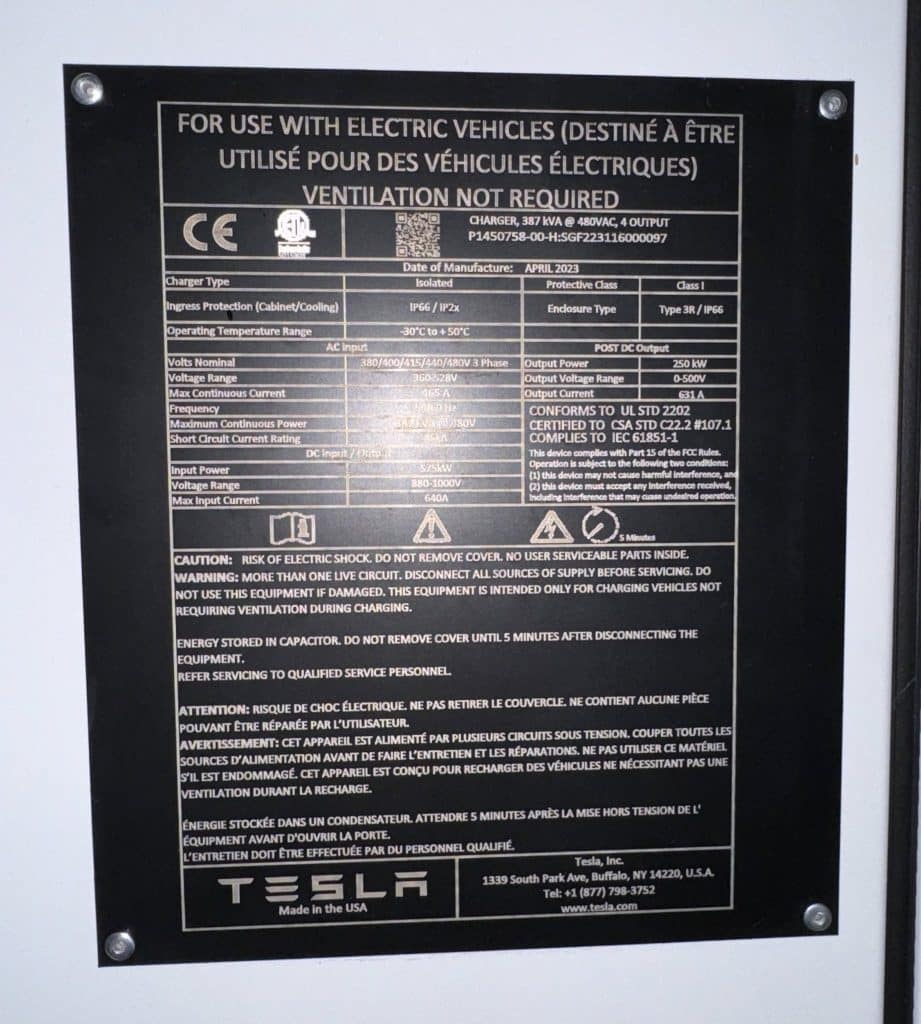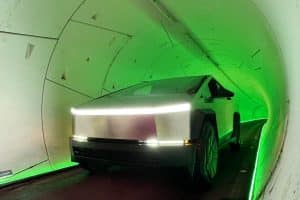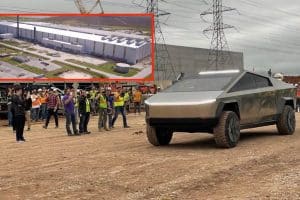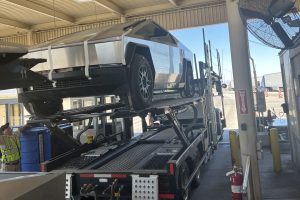- ⚡️ Tesla begins trials of faster charging speeds at select Supercharger stations.
- 🏎️ A Cybertruck achieved charging speeds of up to 323kW, surpassing the usual 250kW.
- 📊 The faster charging occurred at stations with V3 cabinets and V4 charging posts.
- 🛠️ Tesla’s Cybertruck Lead Engineer confirmed the trials were not a bug.
- 🚗 Most Tesla vehicles are currently limited to 250kW charging speeds, except for the Cybertruck and latest Model Y.
- 🌍 Tesla has been rolling out V4 chargers in North America and Europe over the last two years.
- 🔋 The trials could lead to broader deployment and upgraded power cabinets.
Tesla, a frontrunner in electric vehicle innovation, is once again pushing boundaries—this time by trialing faster charging speeds at select Supercharger stations. Here’s an in-depth look at what this means for Tesla owners and the EV industry at large.
Tesla is no stranger to innovation, and its latest venture is aimed at revolutionizing how quickly Electric Vehicles (EVs) can charge. Recent trials show Tesla experimenting with charging speeds significantly higher than the current standard. This blog post will discuss these trials, their implications for Tesla owners, and what this might mean for the future of EVs.


Tesla’s Trials of Faster Charging
The Big Leap: Up to 323kW
- Current Charging Speeds: The standard charging speed at Tesla Superchargers has been around 250kW. This has generally been sufficient for most everyday uses, offering a practical balance between charging time and battery health.
- New Peak Speeds: Recently, a Cybertruck achieved a charging speed of 323kW, breaking the current standard and sparking excitement within the Tesla community.
The Hardware: V3 Cabinets and V4 Posts
The accelerated charging was observed at stations equipped with V3 cabinets and V4 charging posts. The combination of the older V3 hardware with newer V4 components is intriguing and suggests that Tesla is leveraging existing infrastructure to push new boundaries.
Tesla’s Official Standpoint
Confirmation from the Cybertruck Lead Engineer
Tesla’s Cybertruck Lead Engineer confirmed that these high-speed trials were not a bug. This acknowledgment provides clarity and confidence that these trials are part of a strategic plan to enhance the Tesla charging network.
Broader Implications for Tesla Owners
For Existing Vehicles
- Limitations: Currently, most Tesla models are capped at around 250kW charging speeds. The exception includes the latest Model Y and the Cybertruck, which are designed to handle higher power inputs.
- Potential Upgrades: The success of these trials might pave the way for broader deployment of faster chargers and potential upgrades for existing vehicles.
For New Models
As Tesla continues to innovate, new models may come pre-equipped to take full advantage of these high-speed chargers. This could drastically reduce charging times and improve overall user experience.
Rolling Out V4 Chargers
Progress So Far
Over the last two years, Tesla has rolled out V4 chargers across North America and Europe. These chargers are designed to eventually support more than 250kW, although the power cabinets haven’t yet been upgraded to meet these capabilities.
What’s Next?
- Deployment Plans: The trials appear to be the first step toward rolling out faster charging capabilities more broadly. This may involve upgrading the power cabinets and expanding the infrastructure to support these high-speed chargers fully.
- Market Impact: Faster charging could make EVs more appealing, potentially increasing adoption rates and accelerating the transition to sustainable transport.
Why This Matters
User Convenience
Shorter charging times mean less waiting and more driving. For busy individuals and families, this could be a significant advantage.
Environmental Impact
Faster charging means that more EVs can be charged in the same amount of time, optimizing the use of charging stations and potentially decreasing the reliance on fossil fuels for backup power.
Technological Advancement
These trials mark another milestone in Tesla’s commitment to innovation. As the technology evolves, other EV manufacturers may also follow suit, pushing the whole industry forward.
Conclusion
Tesla’s pioneering trials of faster charging speeds at select Supercharger stations indicate a promising future for EV charging infrastructure. By leveraging current technology while planning for future upgrades, Tesla is setting new standards in the EV industry. This could lead to shorter charging times, more efficient use of resources, and a step closer to a sustainable future.
Stay tuned for more updates as Tesla continues to redefine the future of transportation.





